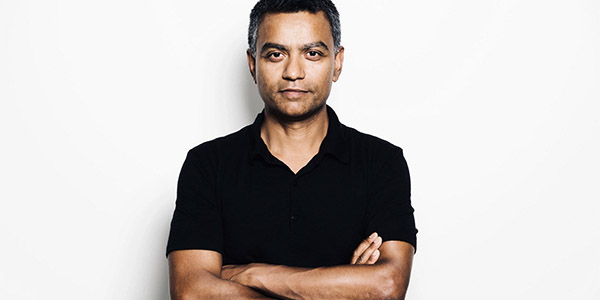21st CENTURY DEMOCRACY
Better democracy through technology
Can machines make us better citizens and conversationalists? Deb Roy thinks so.

Deb Roy, Professor of Media Arts and Sciences; photo by Diana Levine, via Technology Review
"Kick-starting a revolution in civic discourse is currently at the forefront of Roy’s mind. By combining that study with work on social-impact technology, he hopes to foster...much-needed civility and common ground both in person and in social networks."
Excerpt from story in MIT Technology Review
Deb Roy is Professor of Media Arts and Sciences at MIT where he directs the MIT Center for Constructive Communication. "For more than two decades, he has been deeply immersed in studying the complexity of human communication. Today, by combining that study with work on social-impact technology, he hopes to foster more constructive personal connections and enhance civic discourse. His aim is to find much-needed civility and common ground both in person and in social networks."
_______
When Mike Koval, the police chief of Madison, Wisconsin, abruptly resigned on a Sunday in September 2019, the community’s relationship with its men and women in blue was already strained. Use-of-force issues hung over the department after the killing of a Black teenager in 2015. Then, months before Koval left, another Black teenager, in the middle of a mental health crisis, was beaten on the head by an officer while being restrained by three others.
The process of selecting a new police chief followed a standard formula. A five-person team of mayor-appointed, city-council-approved commissioners would make the ultimate decision, allowing for public comment beforehand. But this time, the commissioners wanted that public input to involve more of the local community than just the folks who regularly appeared at town-hall-style meetings.
To gather more meaningful community feedback based on “lived experiences,” the commission took a new approach in which small groups of citizens—many from Madison’s most underheard neighborhoods—were brought together in a nonthreatening environment. Facilitators guided people who differed in age, ethnicity, gender, and socioeconomic status through intimate discussions on topics including what their own relationships with the police were like; whether they trusted or feared them; how they’d seen officers interact with kids and adults; and what type of training they thought police should receive to deal with stressful situations.
“The way we’re speaking with others is fundamentally broken. In every measurable way, things are getting more fractured and polarized.”
These conversations were recorded as part of an initiative called the Local Voices Network (LVN), which worked closely with the nonprofit Cortico and MIT’s Laboratory for Social Machines (LSM), headed by Professor Deb Roy. What made the process unique—and a potential model for other municipalities—was what happened next.
With help from machine-learning technology that Roy and an interdisciplinary team had developed over the past five years, MIT researchers sifted through hundreds of hours of audio to define topics and summarize larger conversations into snippets of text. By using this technology to augment human listening, the researchers were able to highlight parts of the conversations and identify the themes of greatest concern. The insights of 48 people in 31 different conversations were highlighted. The topics that emerged as common concerns became the basis for interview questions asked of the candidates to succeed Koval. Of the six final questions put before the four finalists, three came directly from the community conversations.
Full story at Technology Review
Suggested links
Center for Constructive Communication